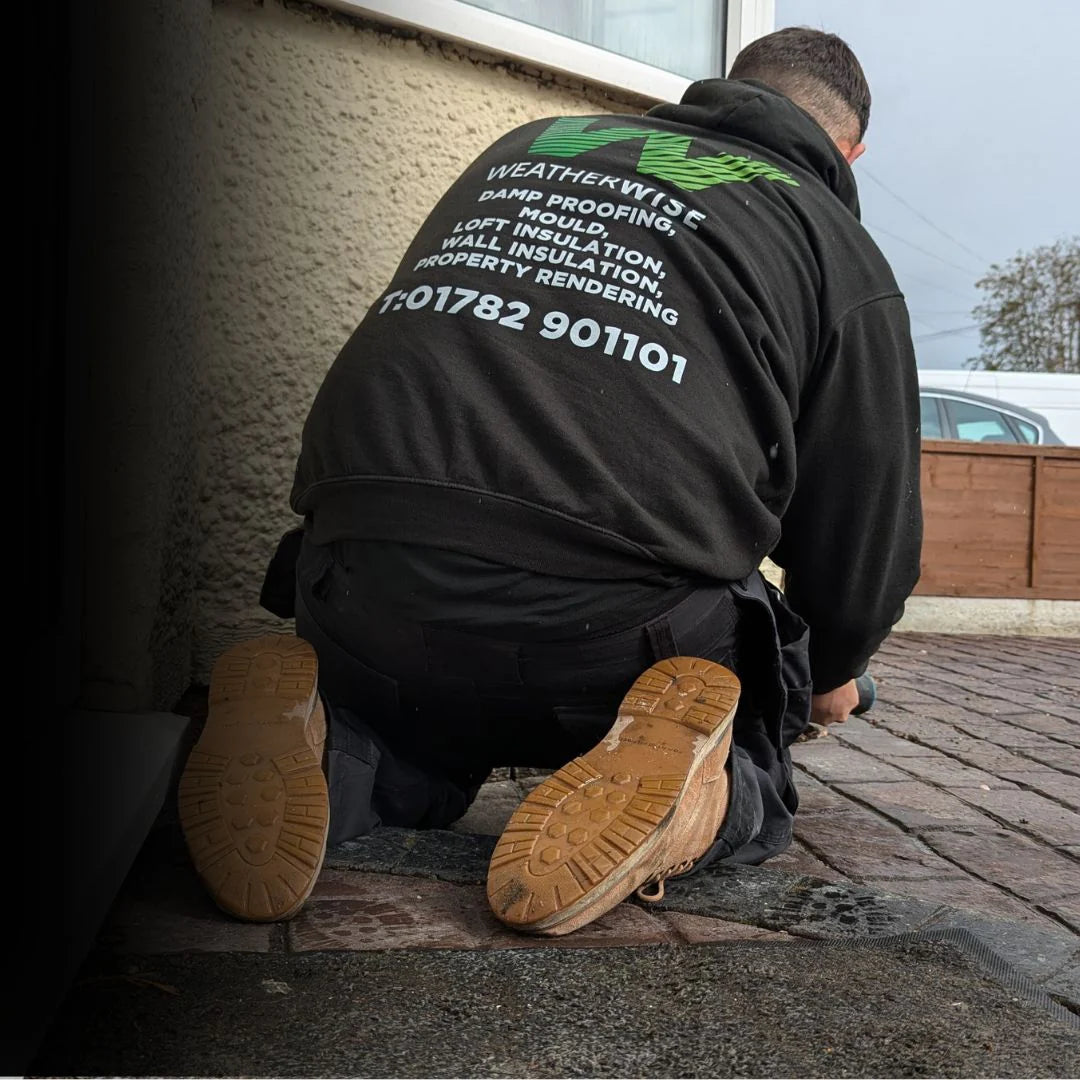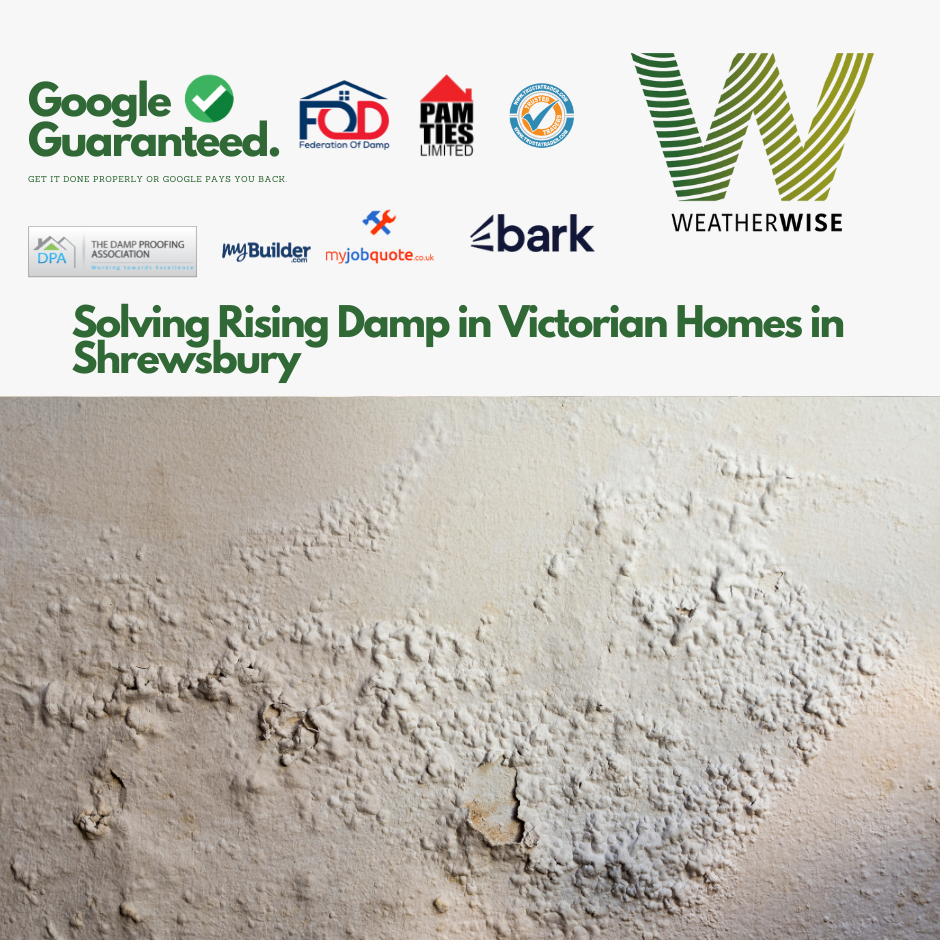Why Victorian Homes Are at Risk
Many Victorian homes in Shrewsbury were built before damp proof courses (DPCs) became standard. This means moisture from the ground can rise through brickwork by capillary action, often leading to visible tide marks, salt deposits, and peeling plaster on lower walls.
Without proper treatment, rising damp can damage decorative finishes, weaken plaster, and contribute to timber decay in skirting boards and floor joists.
How to Spot Rising Damp in a Period Property
Key signs include:
✅ Damp tide marks up to one metre high on ground floor walls
✅ White, powdery salts forming on plaster or brickwork
✅ Decayed or crumbling skirting boards
✅ Peeling wallpaper and musty odours
These issues are often mistaken for condensation or leaks, but in Victorian properties, the absence of an effective DPC is a common cause.
Modern Solutions for Rising Damp
At Weather Wise Solutions, we provide modern treatments tailored to period homes, including:
-
Installing a new damp proof course using proven silicone-based injections
-
Removing contaminated plaster and replacing with salt-resistant, breathable finishes
-
Moisture mapping to confirm the source before work begins
-
Improving sub-floor ventilation where timber floors are at risk
Why Breathability Matters in Older Homes
Traditional Victorian walls were built to “breathe”, allowing moisture to pass through naturally. That’s why we use breathable plasters and coatings, ensuring that damp doesn’t get trapped and cause further issues.
Why Shrewsbury Homeowners Trust Weather Wise
-
CPD-certified in Dampness in Buildings
-
Members of the Damp Proofing Association
-
Proud members of the Federation of Damp
-
Family-run company with a reputation for honest advice and quality work
Book a Free Damp Survey for your Victorian Home here:
👉 https://weatherwiseuk.co.uk/pages/contact



